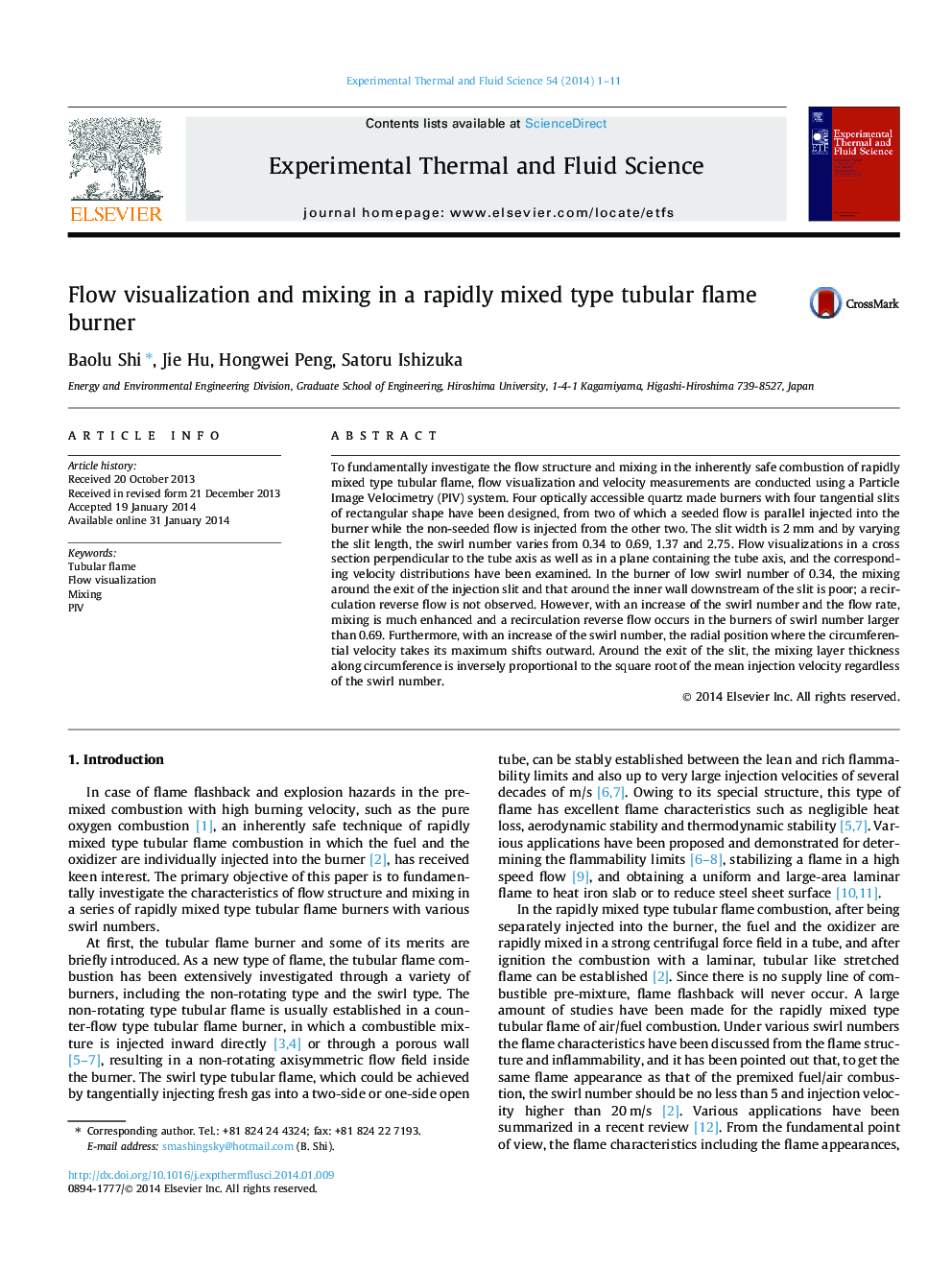| Article ID | Journal | Published Year | Pages | File Type |
|---|---|---|---|---|
| 7052499 | Experimental Thermal and Fluid Science | 2014 | 11 Pages |
Abstract
To fundamentally investigate the flow structure and mixing in the inherently safe combustion of rapidly mixed type tubular flame, flow visualization and velocity measurements are conducted using a Particle Image Velocimetry (PIV) system. Four optically accessible quartz made burners with four tangential slits of rectangular shape have been designed, from two of which a seeded flow is parallel injected into the burner while the non-seeded flow is injected from the other two. The slit width is 2Â mm and by varying the slit length, the swirl number varies from 0.34 to 0.69, 1.37 and 2.75. Flow visualizations in a cross section perpendicular to the tube axis as well as in a plane containing the tube axis, and the corresponding velocity distributions have been examined. In the burner of low swirl number of 0.34, the mixing around the exit of the injection slit and that around the inner wall downstream of the slit is poor; a recirculation reverse flow is not observed. However, with an increase of the swirl number and the flow rate, mixing is much enhanced and a recirculation reverse flow occurs in the burners of swirl number larger than 0.69. Furthermore, with an increase of the swirl number, the radial position where the circumferential velocity takes its maximum shifts outward. Around the exit of the slit, the mixing layer thickness along circumference is inversely proportional to the square root of the mean injection velocity regardless of the swirl number.
Related Topics
Physical Sciences and Engineering
Chemical Engineering
Fluid Flow and Transfer Processes
Authors
Baolu Shi, Jie Hu, Hongwei Peng, Satoru Ishizuka,
